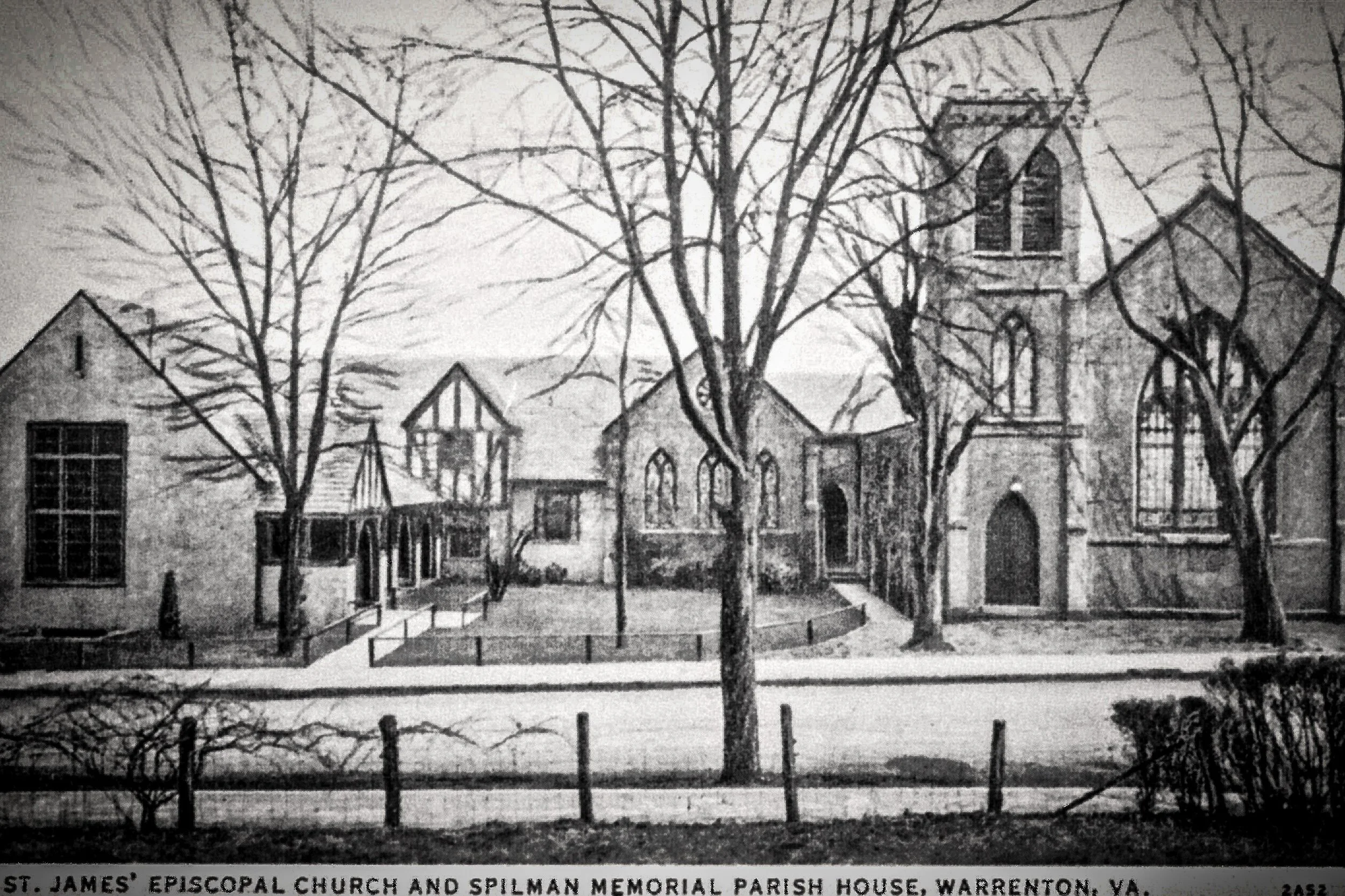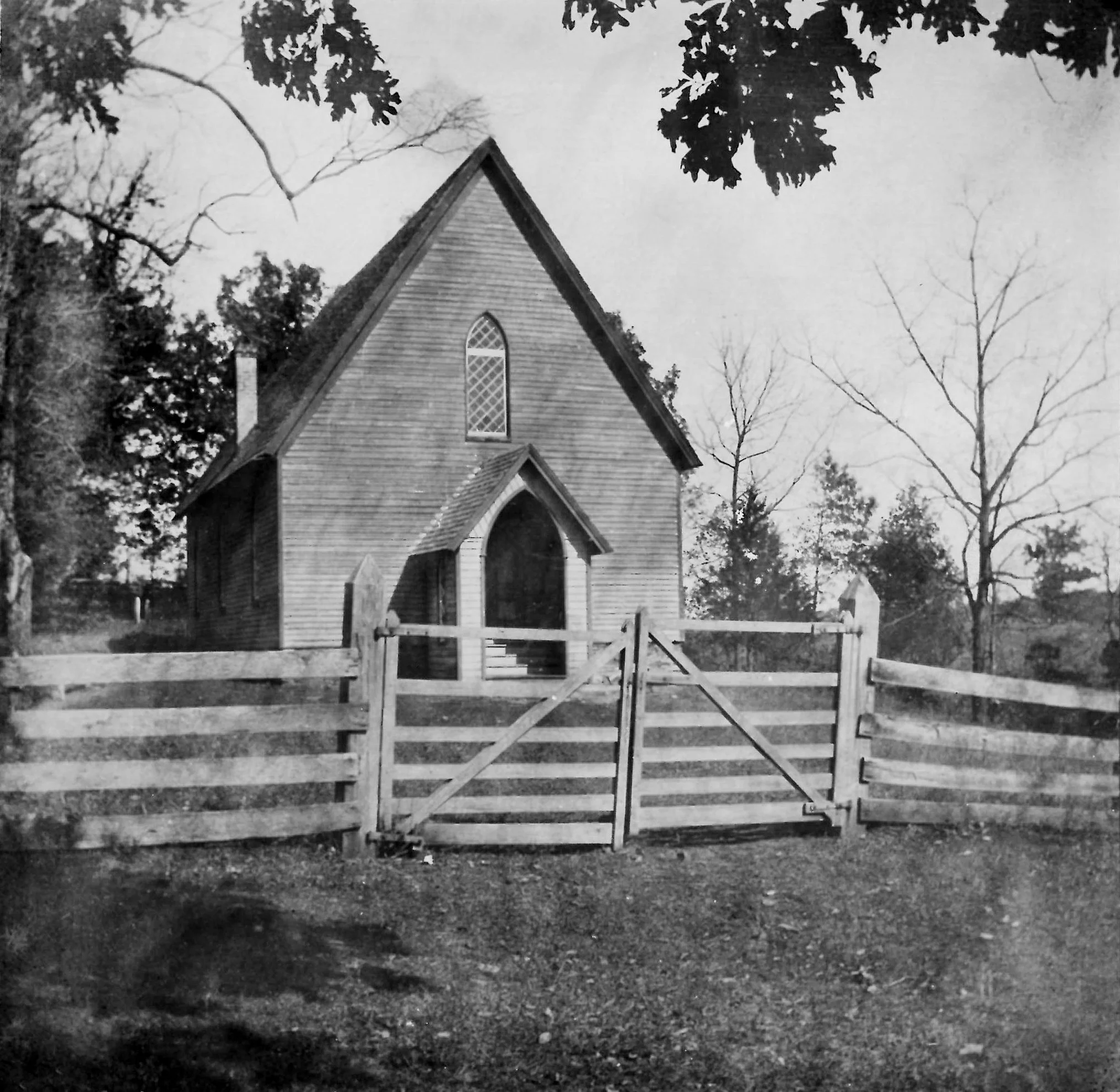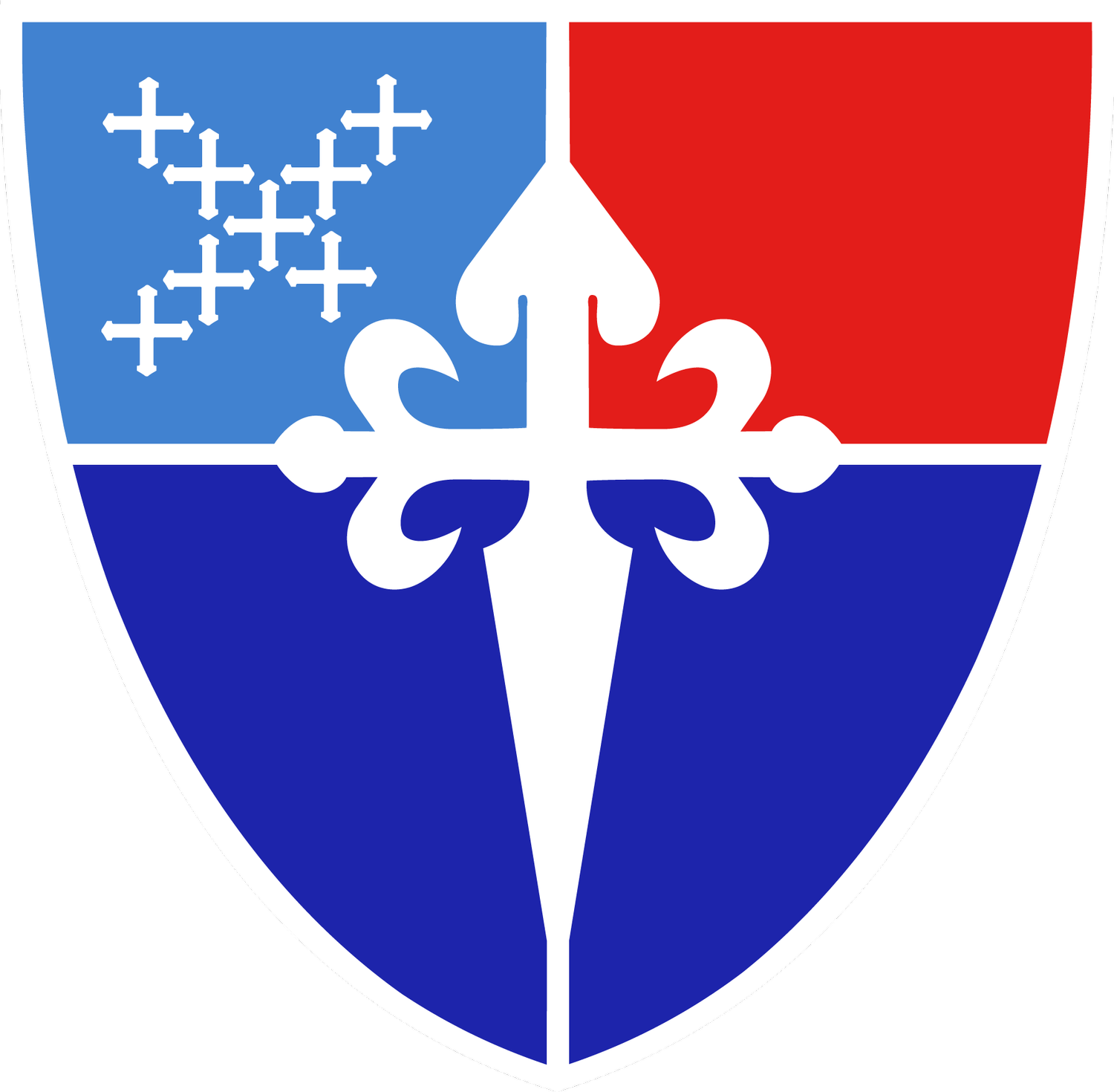
History of Hamilton Parish and Saint James’ Warrenton
Hamilton Parish, of which Saint James’ Warrenton is now the sole parish church, was established in 1730. The first church in Hamilton Parish was built at Elk Run; its foundation was uncovered from 1999 to 2006, and the site has been developed as a park. The second church, St. Mary’s, was erected in 1755 at Turkey Run, about one mile south of what is now Warrenton, which was then known as Fauquier Court House. In 1810, the town was officially named Warrenton. By then, the churches at Elk Run and Turkey Run had been abandoned and fallen into ruin.
In 1816, the first Episcopal church in Warrenton was built just below the courthouse on Alexandria Pike, and was known as Saint James’. The wooden framework structure was sold in 1846, and in 1853, a new brick church on Culpeper Street was consecrated; it continues today as the site of Saint James’ Warrenton.
The 1853 church building was possibly designed — or at least influenced by — renowned New York architect James Renwick Jr., a strong advocate of the Gothic Revival style of architecture (such as the Smithsonian Castle, designed by Renwick). In 1910, a devastating fire consumed the church and most of its contents. The church was rebuilt, and services resumed in 1912. A parish hall was attached to the north side, now used as a chapel.
The rebuilt structure is a stucco and brick building in the style of an English parish church. Once inside the Gothic interior, one sees the splendid stained glass Ascension window above the altar. Two windows were salvaged from the 1910 fire, as were some of the furnishings, including the brass pulpit and Communion rail. Today, Saint James’ is beautified with additional stained glass windows, more than 300 needlepoint kneelers hand-stitched by parishioners, and other appropriate furnishings to enrich the setting in which we worship. One of the treasures of Saint James’ is a 17th century copy of the King James Bible.
Fifteen rectors have served Saint James’ during its history.

Christ’s Chapel at Baldwin Ridge
In 1878, bad weather often made it difficult to travel by horse and buggy from the countryside to Sunday services at Saint James’ in Warrenton. Therefore, the concept of building a mission church east of Warrenton was proposed. By good fortune, a site at Mates Hill on Baldwin’s Ridge was donated by Joseph W. Blackwell, money was raised, and Christ’s Chapel was completed in 1883. The congregation was served by the rectors of Saint James’. Adjacent to the church, land was set aside for a graveyard to include family plots, as was the custom.
The chapel was in use until it was closed during World War Two because of shortages of fuel and other supplies. In 1949, the chapel was deconsecrated, and then razed in the 1950s. Its furnishings were removed to Saint James’. The graveyard continues undisturbed; the last burial was about 1915.
